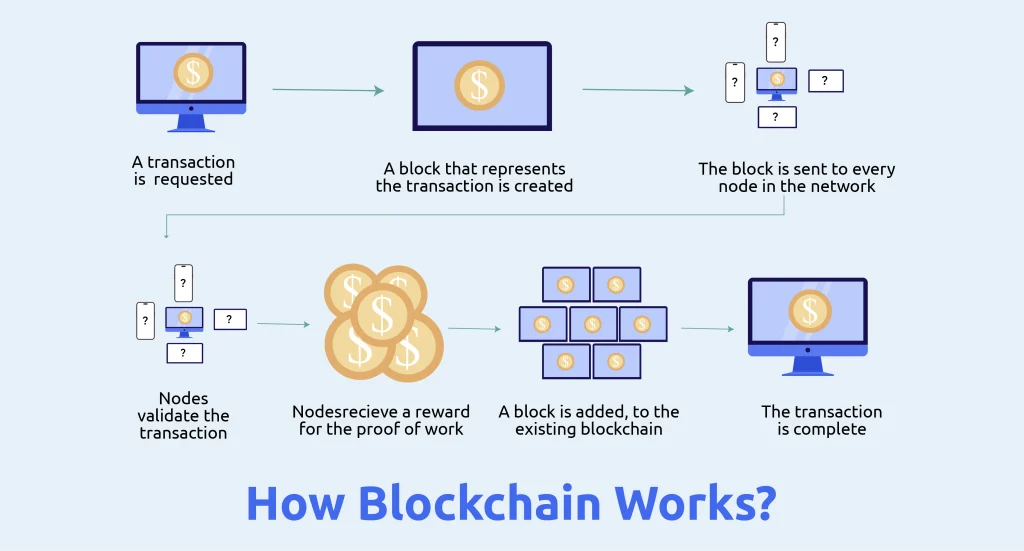
Top 12 Software Development Methodologies for Effective Project Management
As digital transformation accelerates, businesses are increasingly committed to developing scalable and feature-rich software solutions that address both internal and

Accelerate your time-to-market with unmatched quality through our subscription-based development services

Accelerate your time-to-market with unmatched quality through our subscription-based development services
Software Development as a Subscription

Security as a Service

Launch Your MVP in 90 Days

Building secure decentralized solutions

Modernize Your Software with AI

Developing smarter software systems


Accelerate your time-to-market with unmatched quality through our subscription-based development services

Accelerate your time-to-market with unmatched quality through our subscription-based development services
Software Development as a Subscription

Security as a Service

Launch Your MVP in 90 Days

Building secure decentralized solutions

Modernize Your Software with AI

Developing smarter software systems


Accelerate your time-to-market with unmatched quality through our subscription-based development services

Accelerate your time-to-market with unmatched quality through our subscription-based development services
Software Development as a Subscription

Security as a Service

Launch Your MVP in 90 Days

Building secure decentralized solutions

Modernize Your Software with AI

Developing smarter software systems


Accelerate your time-to-market with unmatched quality through our subscription-based development services

Accelerate your time-to-market with unmatched quality through our subscription-based development services
Software Development as a Subscription

Security as a Service

Launch Your MVP in 90 Days

Building secure decentralized solutions

Modernize Your Software with AI

Developing smarter software systems


Accelerate your time-to-market with unmatched quality through our subscription-based development services

Accelerate your time-to-market with unmatched quality through our subscription-based development services
Software Development as a Subscription

Security as a Service

Launch Your MVP in 90 Days

Building secure decentralized solutions

Modernize Your Software with AI

Developing smarter software systems

We are living in the digital age where information is flowing incessantly across networks. This flow of data has made it paramount that trust and security in transactions should be ensured. Now enter blockchain technology, a groundbreaking innovation that has caused revolutionary changes across various industries, ranging from finance to healthcare, to supply chain and how people vote in elections.
While blockchain is customarily discussed about cryptocurrencies like Bitcoin and Ethereum, exciting applications are beginning to appear in conversations in totally separate industries. These debates revolve around data tracking, national currencies, non-fungible tokens (NFTs), and more topics, all raising the same questions: what is blockchain technology, how does it work, and what is it capable of?
In this blog, we’ll try to decode the answers to these questions and understand the inner workings of blockchain. Keep reading this blog piece till the end if you want to gain complete knowledge about the elements of blockchain technology.
Blockchain can be termed as a method of recording information that makes it impossible or difficult for the system to be altered, manipulated, or hacked. It is a distributed ledger that duplicates transactions and distributes them across the network of systems taking part in the blockchain.
Blockchain technology is a framework that stores transactional records, commonly known as ‘block’, of the public in multiple databases, known as the ‘chain’, across a network of peer-to-peer nodes. This storage mechanism is typically referred to as a ‘digital ledger’.
All transactions in this digital ledger are authorized by the digital signature of the owner which authenticates the transaction and protects it from getting tampered with. This is how the information stored in the digital ledger remains highly secure.
To explain it in simple terms, the digital ledger can be hypothetically considered a Google spreadsheet shared among multiple (people) computers in a network. The sheet contains transactional records based on actual purchase data. The people with whom the file is shared can view the data, but cannot corrupt it as they don’t have access to edit that data.
To simplify the concept, imagine the digital ledger as a Google spreadsheet shared among multiple computers in a network. This spreadsheet contains transactional records based on actual purchases. Everyone with access to the file can view the information, but they cannot corrupt it because they don’t have access to edit it.
You may have noticed a significant number of businesses around the world integrating blockchain into their operations. But how does blockchain work, and is this a major change or a simple addition? The advancements in this domain have the potential to bring revolutionary changes in the technological landscape.

Blockchain is a combination of three next-gen technologies, which include:
Cryptography keys consist of two components, Private Key and Public Key. These keys facilitate successful transactions between two entities. Each entity uses these two keys to produce a secure digital identity reference, which is the most crucial aspect of blockchain technology. In the cryptocurrency world, this secure identity is termed a ‘digital signature’ and is utilized for authorizing and controlling transactions.
The digital signature is merged with the peer-to-peer network, where a large number of individuals act as authorities, employing the digital signature to reach consensus on transactions and among other matters. When a transaction is authorized, it undergoes a mathematical verification, which ensures that the transaction is securely executed between the two parties connected with the network. In essence, Blockchain users utilize cryptography keys to conduct various digital interactions across the peer-to-peer network.
Vaival is one of the leading blockchain development companies that is transforming the businesses across different industries. By leveraging the cutting-edge framework of blockchain, Vaival is helping organizations streamline their day-to-day operations, enhance security, and bring efficiency into processes. Vaival’s blockchain development services can be customized to each businesses’ specific needs, whether it’s implementing smart contracts, enhancing supply chain transparency, or securing data through decentralized networks.
In this blog, we have only scratched the surface of the intricacies of blockchain technology. However, it’s quite clear that we are standing on the brink of a transformative era. The decentralized nature of blockchain, along with its robust security and automation features, has the potential to revolutionize how businesses operate and interact in the digital ecosystem. Blockchain experts are continuously pushing the boundaries of what is possible in this domain, indicating that businesses should begin integrating its applications into their operations to stay competitive in the ever-evolving world of technology.

With 6+ years of experience in crafting content and copies in the IT field, Sara started loving technology. Sara excels in creating extensively researched articles. What makes her unique is her approach to break down complex terms into easy-to-understand for both novices and experts. Her work adheres to E-E-A-T (Experience, Expertise, Authoritativeness, Trustworthiness) and Google's guidelines, ensuring readers-first content. Sara plays with words and each word is penned down magically to hook readers with the deep concepts of technology. Her aim as an author is to deliver informative, engaging, and jargon-free pieces for readers and for engines to optimize for peak performance. By transforming sophisticated ideas into clear, concise communication, Sara helps businesses and readers alike navigate the digital landscape with confidence and clarity.

As digital transformation accelerates, businesses are increasingly committed to developing scalable and feature-rich software solutions that address both internal and

The history of software development spans centuries. The software development dates back to the 1950s when the first computers were

In today’s cutthroat and ever-changing business environment, organizations tirelessly seek methods to optimize their processes, reduce expenses, and keep their
Book a Free Consultation
We're eager to explore how we can improve your software development projects with our creative solutions and strategic insights.
Software Development as a Service, provided by Vaival, encompasses a full spectrum of software development services throughout the entire software lifecycle. This includes design, architecture, development, testing, quality assurance, production support, and managed services.
SDaaS offers several advantages:
Vaival utilizes a robust tech stack that includes programming languages such as Python and JavaScript, frameworks like React for front-end development, and Node.js for backend operations, as well as specialized technologies in Web3, blockchain, and AI/ML.
Yes, we have worked with all kinds of businesses from startups to enterprises in developing their software and IT infrastructure. Our SDaaS solution is perfect for businesses who want to scale their project demands fast without breaking the bank or spending weeks on hiring.
No, there isn’t any difference. All plans have the same rigorous QA process in place, ensuring every project is of top-notch quality.
Click on the button below to get started.
Technologies
Insights
All Rights Reserved © 2024 Vaival Technologies